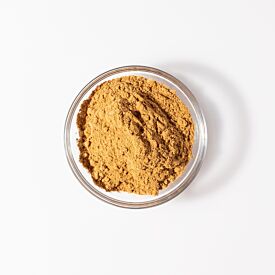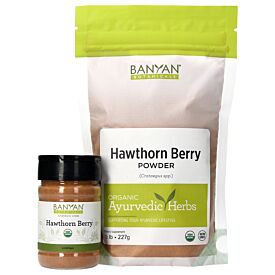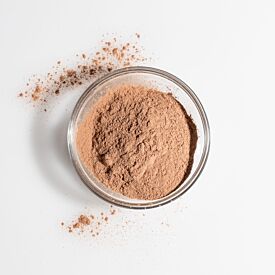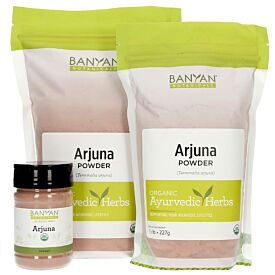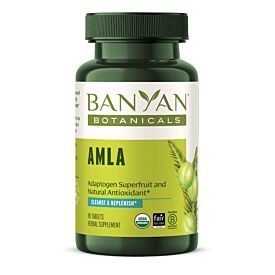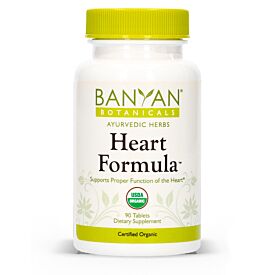Heartfelt Tips for Cardiovascular Care
Visualize a Valentine’s Day heart, or a heart you would trace on a letter to a loved one. The symbol represents emotion, specifically all those related to love. Now envision a picture of an anatomical heart. This association is different. We relate this image almost exclusively to our physical body rather than our emotional or mental state. But is there really a separation? The way you feel joy, gratitude, and grief in your chest is sheer embodiment that the answer is “no.”
Ayurveda recognizes the existence of a physical and emotional heart, but they are cared for as one.
The Sanskrit word for heart is hridayam, which beautifully translates as “to give and receive in a continuous way” (hri—receive, da—give, yam—circulating or continual). This single word encompasses how our heart provides for us by moving blood and nourishment throughout our body, but it also shows our capacity to equally offer and accept love. And in the same vein, when we strive to recover from a cardiac condition or mend a broken heart, it is done through a synthesis of emotional healing and physical care.
As you recall from your elementary science classes, our heart and blood vessels make up the cardiovascular system. Its primary role is to carry blood full of oxygen and nutrients to our tissues and move waste for disposal to their proper sites for elimination. From an Ayurvedic perspective, there’s a missing layer that your science teacher may not have been privy to. Our heart is also the site of awareness and intellect, or what we call sadhaka pitta. And while the heart pumps blood, or rasa dhatu (plasma) and rakta dhatu (red blood cells), it is also moving ojas through the vessels. Ojas, or the essence, immunity, and strength of your being, is said to move from a mother’s heart to the fetus and is responsible for coordinating the formation of the fetal heart. As intellect, emotion, and immunity are so closely related to the heart, its health depends upon more than good food and a solid regimen of exercise.
To be good to your heart, fully embrace it as the part of your being that is vital for your life and your connection to others. Use these heartfelt tips as a guide to care for your cardiovascular system in a way that reflects all it does for you.
Love Unconditionally
We can always love and express our love more. A compliment, a smile, or a willingness to see things from another’s viewpoint helps our heart grow strong. Sometimes, the change in perspective is about seeing ourselves from someone else’s view. It can be difficult to have compassion for ourselves, as we are our own worst critics. Still, self-love is really where heart health begins.
Practice Moderation
Overdoing things not only leads to an accumulation of a dosha imbalance, it can also affect the flow of ojas throughout the body. For example, ojas has a potential to deplete much faster than it should when we overwork, over exercise, or indulge in eating, drinking, and sex. Ultimately, this will weaken the heart. Have the good things, but don’t have too much.
Learn to Receive
It can be difficult to accept the same things that we provide for others. It’s often hard to ask for help, care, or even love, but it can have great reward. In a more abstract manner, imagine if blood was sent from your heart to your extremities, but there was no venous return. As our physical heart so plainly displays, the art of receiving is as essential as giving. Just as there must be darkness for light to exist, giving cannot exist without receiving.

Move and Breathe
Don’t obsess about maximizing your heart rate and intensity, but consider at least some light movement every day. Knowing Western medicine suggests exercising only to an intensity that you can still speak, and Ayurveda suggests exercising only to the point of perspiration, walking (especially walking in nature) is the perfect example. Yoga asana that creates an opening around the heart space is also suggested, such as active or supported backbends like Fish Pose (Matsyasana), Cobra Pose (Bhujangasana), Upward Bow (Wheel) Pose (Urdhva Dhanurasana), and Bow Pose (Dhanurasana). And don’t forget to breathe. Our breath is directly related to our circulatory system, and breathing practices can enhance heart health by reducing stress and lowering our heart rate and blood pressure. A pranayama such as Nadi Shodhana (Alternate Nostril Breathing) is a nice, neutral practice of breath control for all doshas.
Enjoy the Spice, and Herbs, of Life
Aside from a diet that is abundant in fresh food and scarce in fatty foods, herbs and spices can be a catalyst to cardiac well-being. Eat fresh pomegranates or drink pomegranate juice to nourish rakta dhatu. Try cooking with turmeric and saffron. The wonder herb turmeric is considered a blood builder and has been said to support healthy cholesterol levels and increase blood flow. Saffron has an affinity for the heart and blood. Drink teas with rose, as it opens the emotional heart and uplifts our spirits. And when all else fails, seek out the help of arjuna, the herb we most commonly associate with the heart. Arjuna is the name of a warrior in the Bhagavad Gita and is a true warrior when it comes to mending the emotional and rejuvenating the physical heart.




